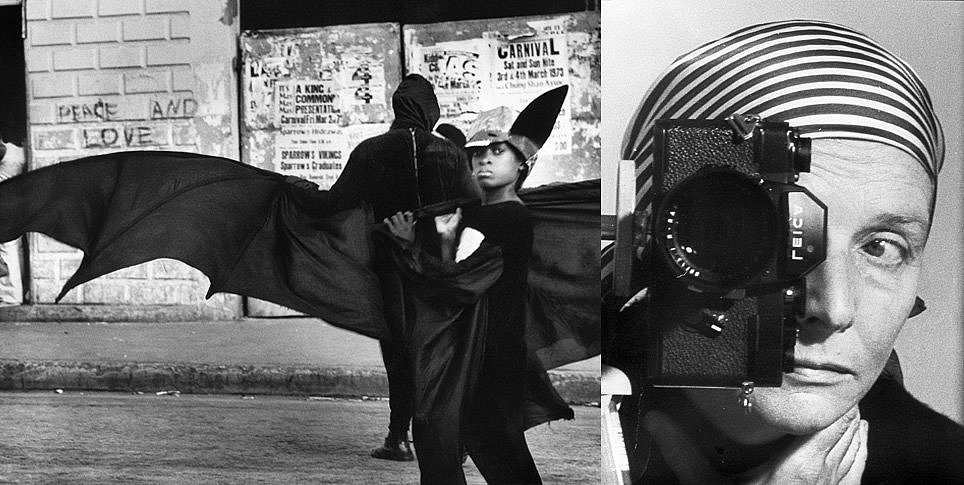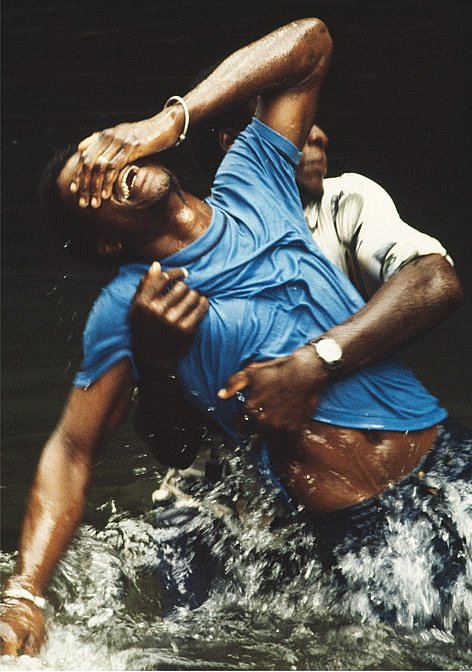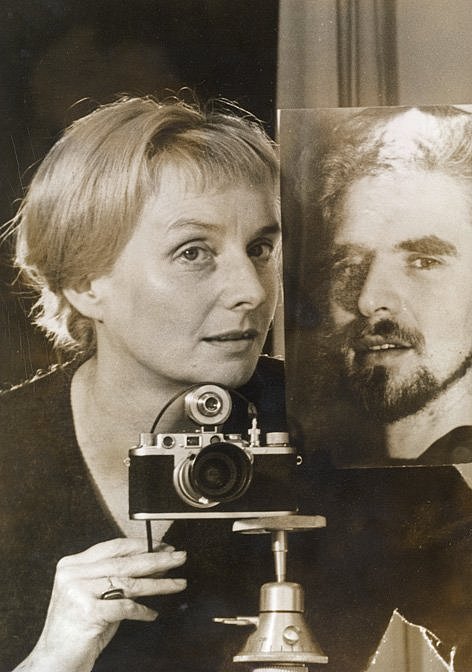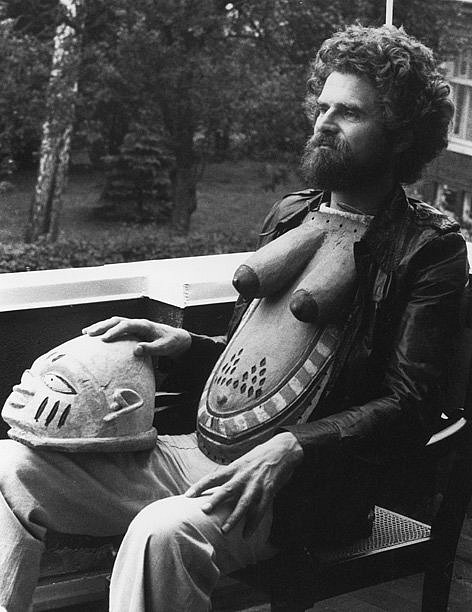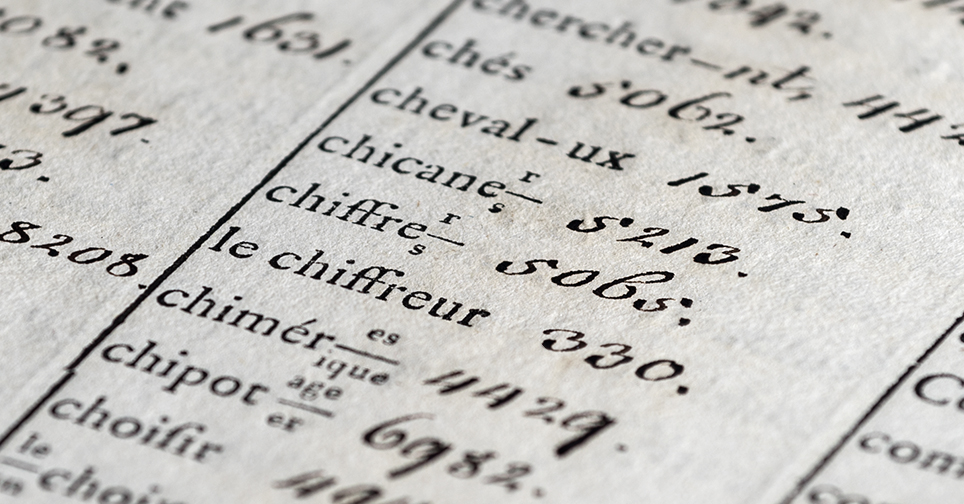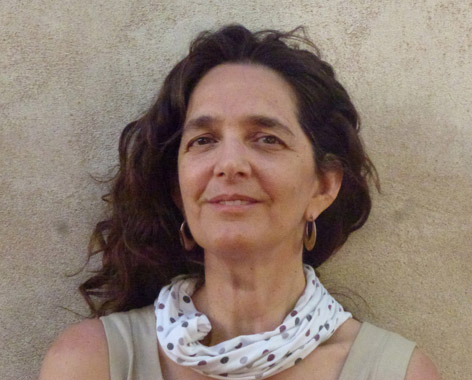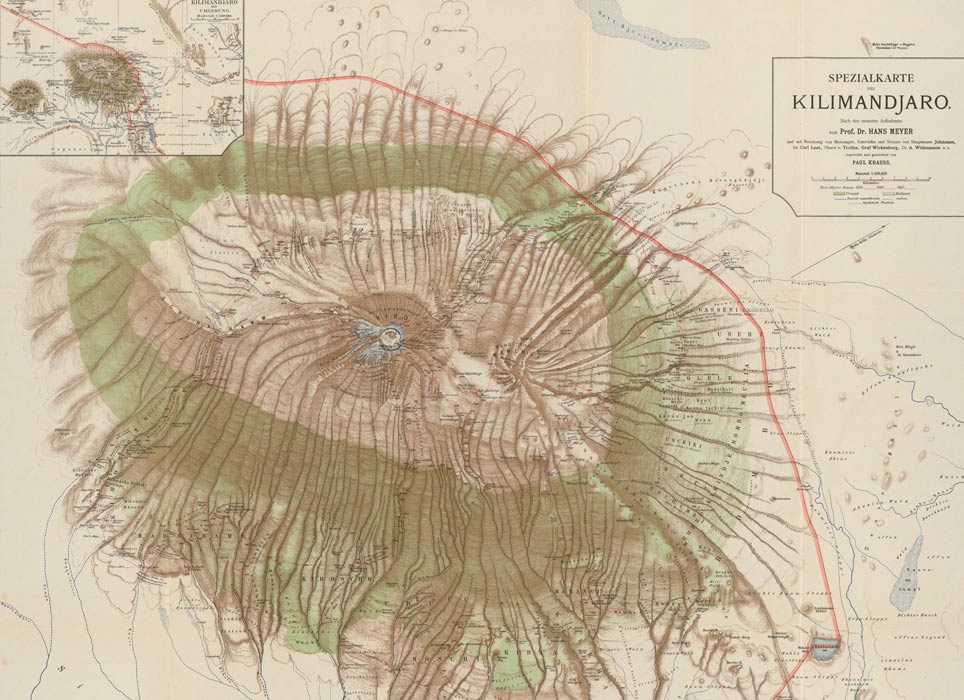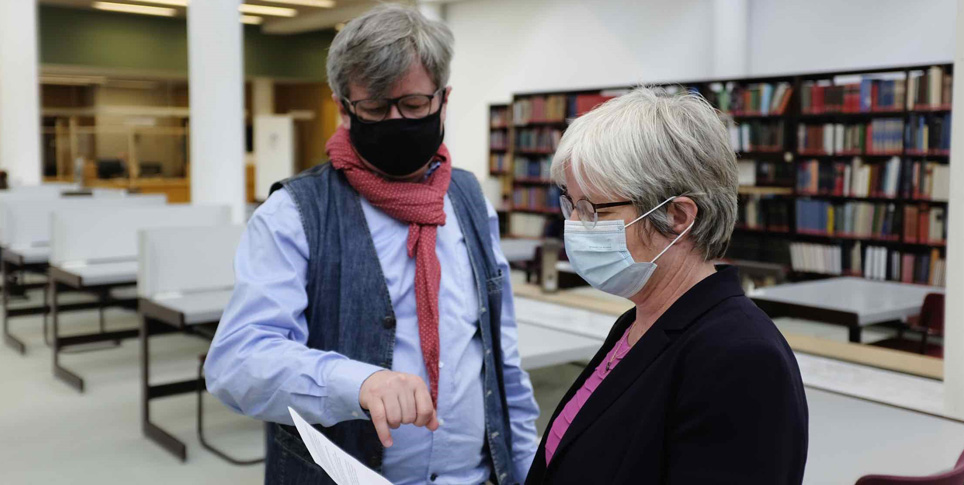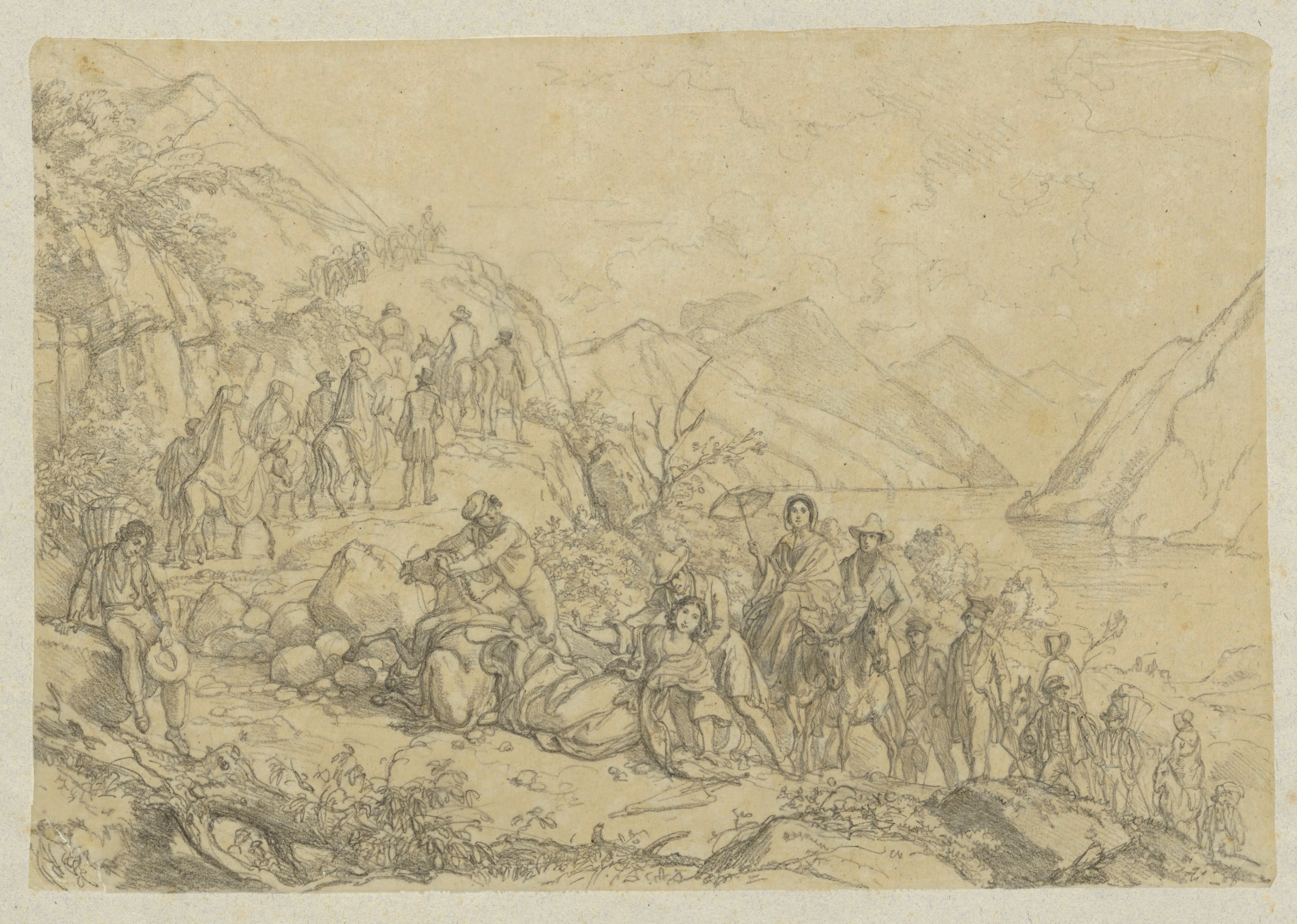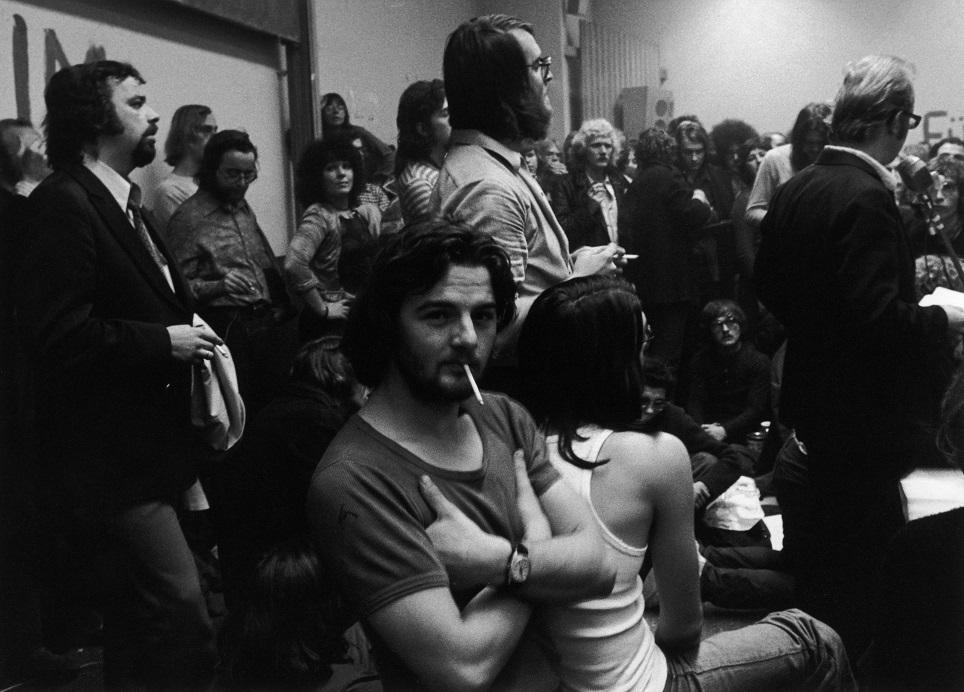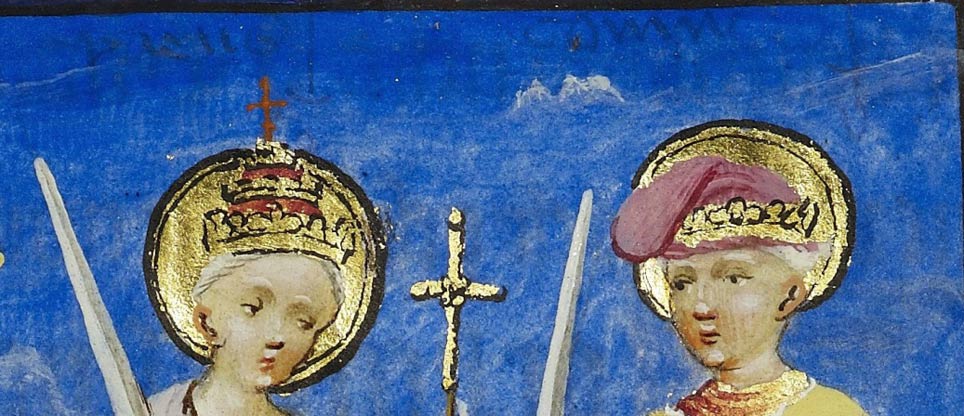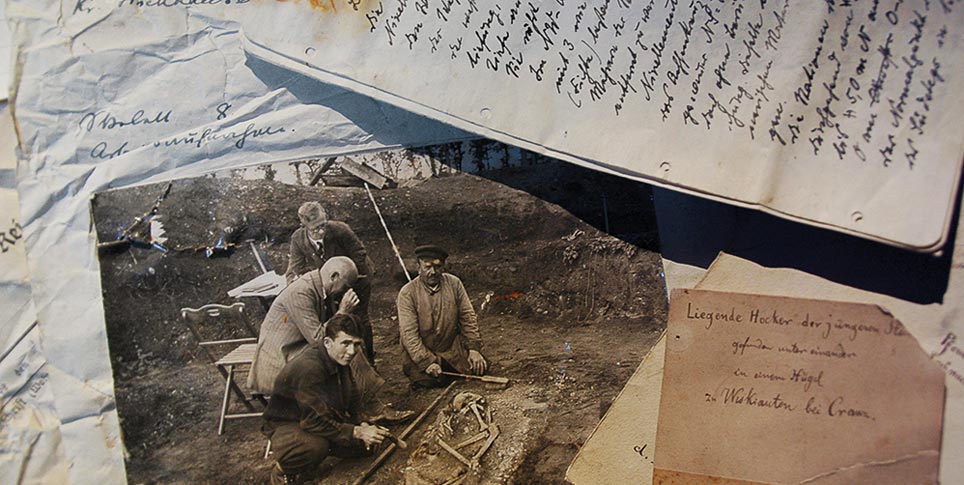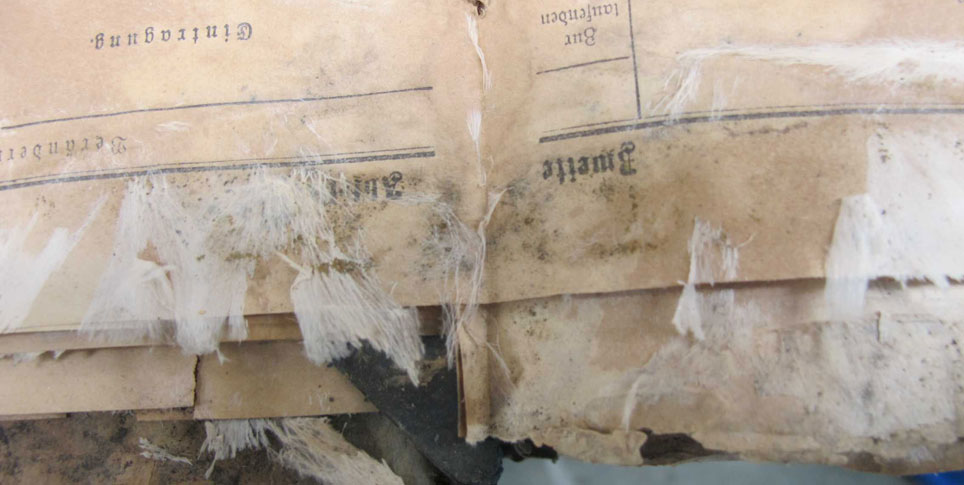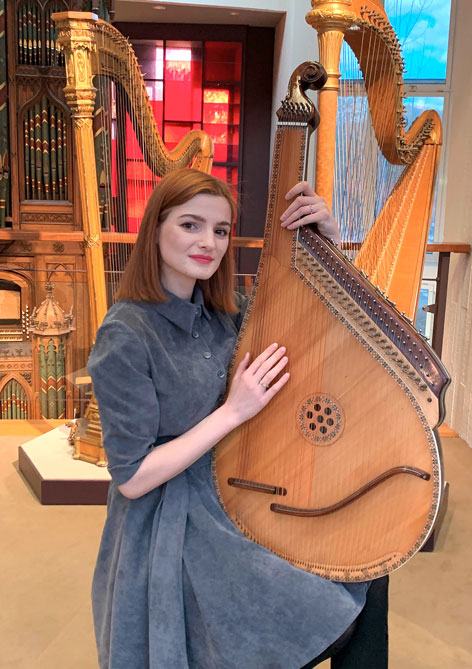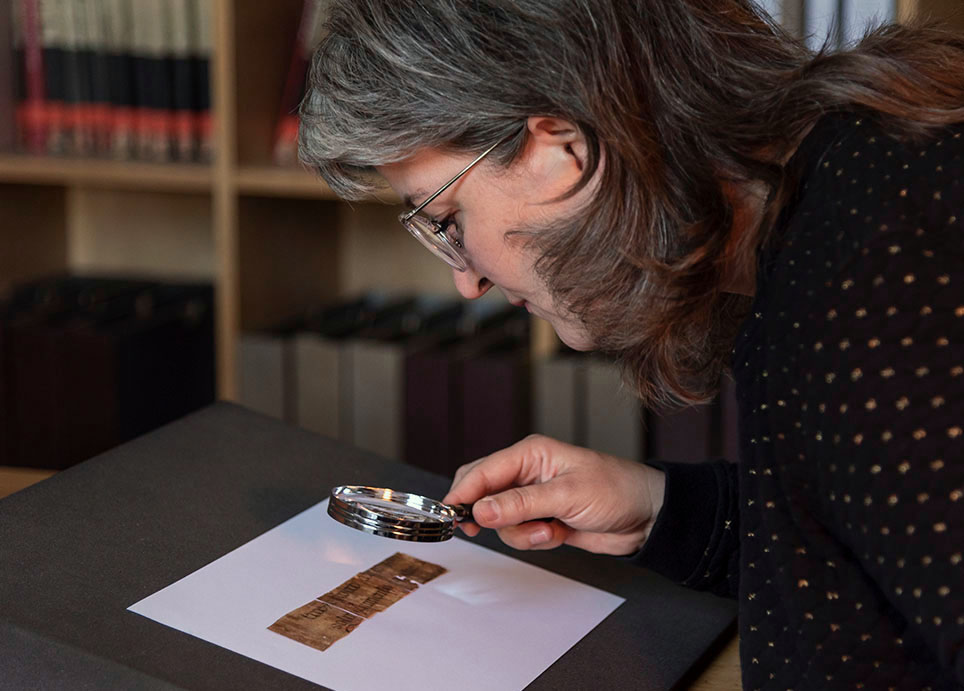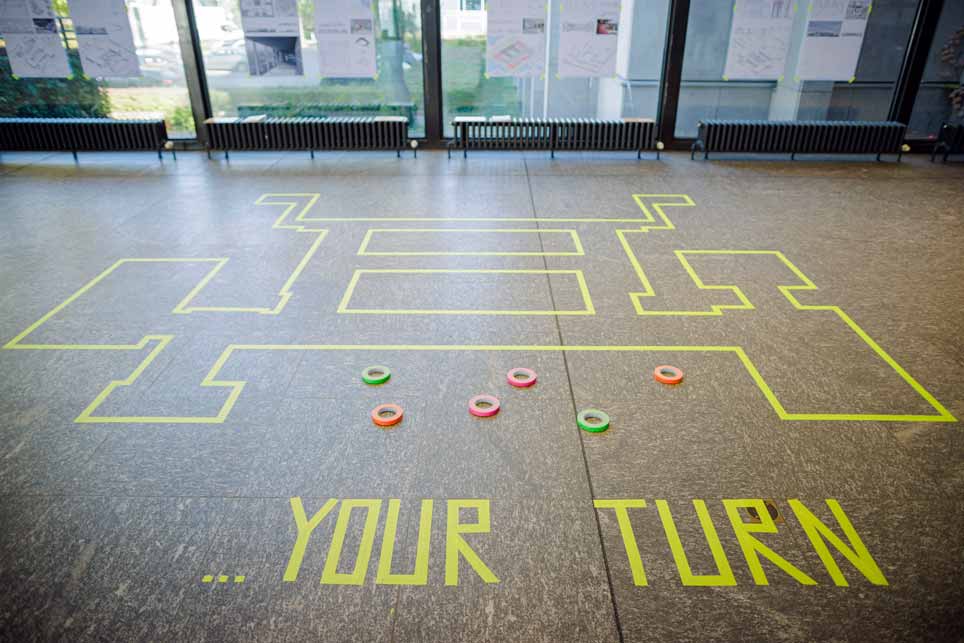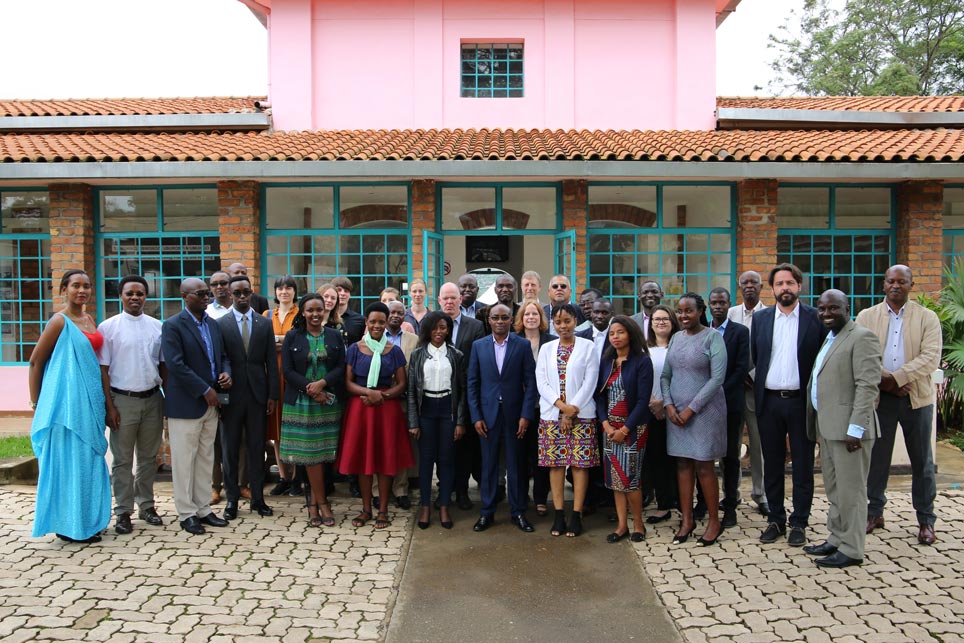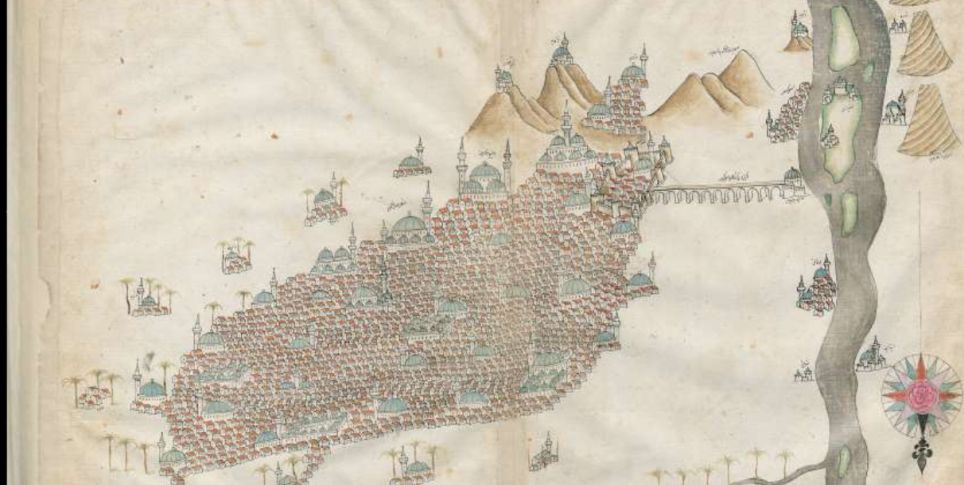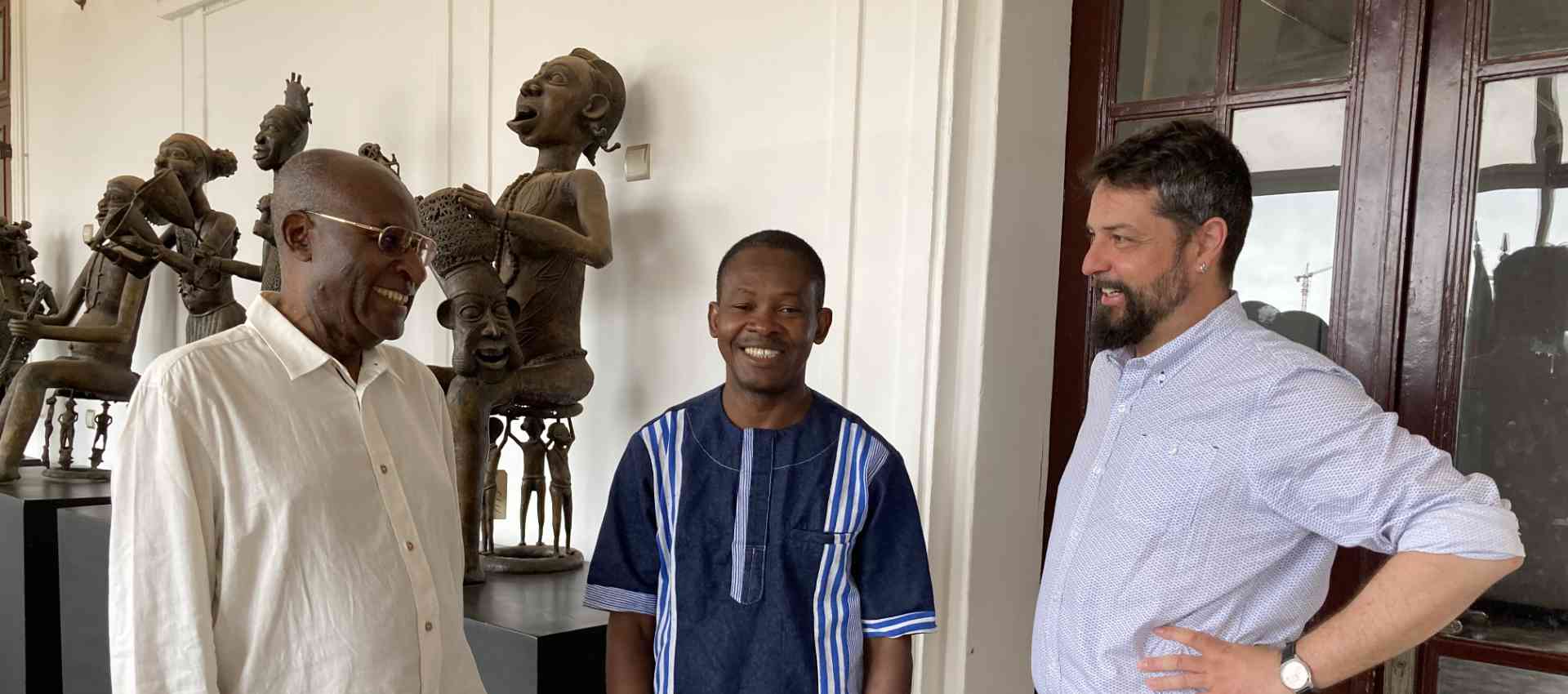With themes like psychiatric villages in Senegal, traditional rites of healing in Brazil and colonial architecture, the work of photographer Leonore Mau occupies a middle ground between art and ethnology. In a five-year project, the approximately 112,000 images of her estate have been catalogued and made accessible to researchers and the public on a recently launched website. In the interview below, Christina Stehr, the deputy director of the bpk Bildagentur, and Anna Götte from the S. Fischer Foundation explain why studying Leonore Mau and her work is such a worthwhile endeavor.
Who was Leonore Mau, and why is it important that she not be forgotten?
Anna Götte: Leonore Mau was a photographer. From 1916 to 2013, she lived mostly in Hamburg, and from there, she traveled throughout almost the whole world with her camera. Her work occupies a middle ground between ethnological documentation and art photography – and it is inseparably linked with the work of author Hubert Fichte, who traveled with her on all of her journeys. She should not be forgotten, because she left behind a truly marvelous body of work full of beauty and magic. Also because her work and Fichte’s work raise a great many questions that are highly relevant to the present day, such as the issue of how the West European perspective on other cultures becomes apparent in these images. Both Mau and Fichte reflected on that in their work. In Fichte’s books and interviews, we repeatedly find indications that he wrestled with the issue a great deal – and with the role of “European ethnographer in foreign lands,” which he always adopted in these situations. And Mau made statements about this as well. The great ambivalence in the work of both is very intriguing – and highly topical in view of contemporary debates.
Christina Stehr: Although these trips took place between the 1960s and 1980s, I consider the artistic output of Fichte and Mau to be more relevant to the present day than ever. They explicitly focused on Afro-American religions and rituals, which was really unusual at that time. And the eye for detail that they developed there was a very special one. Although the photographs were published in the 1960s and 1980s in magazines, and in books along with text written by Fichte , Leonore Mau is not very well known these days. And that is why the new website was created: to give more attention to her life and work, and to the special partnership with Hubert Fichte; and to make these subjects accessible for new research and exhibition projects.
How did people react to this new and different viewpoint back then?
AG: During his lifetime, Fichte’s ethnological work generated a lot of controversy. People were very much aware that the attitude he was adopting was a new and special one. Mau is definitely a new discovery: for a very long time, she was seen as an illustrator of Fichte’s writing, but not really on an equal footing with his work.
How did this rediscovery come about in purely practical terms?
AG: Monika Schöller, the founder of the S. Fischer Stiftung (S. Fischer Foundation) and publisher at S. Fischer Verlag, always maintained a very close and trusting relationship with both Hubert Fichte and Leonore Mau, who were of course authors at her publishing house. When Hubert Fichte died at a relatively young age, his copyrights and entire estate were inherited by Leonore Mau, who then faced the question of what should be done with it. The eventual outcome, after many years, was that both of them left their estates and the copyrights to their work with the S. Fischer Stiftung. The physical estate of Hubert Fichte is held by the Staats- und Universitätsbibliothek SUB in Hamburg (State and University Library of Hamburg), and in 2017, the S. Fischer Stiftung placed the estate of Leonore Mau in the care of bpk Bildagentur (Picture Agency bpk) as a permanent loan.
CS: An agreement was reached at the time between the S. Fischer Stiftung and the bpk that we would take the physical estate and the analog archive and put it in storage in Friedrichshagen, where everything can be kept under ideal climatic conditions and looked after according to proper conservation practice. At the same time, in 2017, a cataloguing project got under way in cooperation with the S. Fischer Stiftung and two external participants, Marlene Burmeister and Natalie David. The objective was to view and catalogue all of the material that Mau left behind, digitize a portion of it and then present it to the public through the new website. The team members have enjoyed working together closely over the last five years in what has amounted to a very through examination of the entire body of work that Mau produced.
How large is the set of images that Leonore Mau left behind, and how many of them are on the website?
AG: About 800 pictures are published on the website. The estate as a whole has 122,800 images. So only a very small, curated selection has been put online.
CS: In addition to the large collection of negatives and color transparencies , there are about 6,300 original prints. We were faced with the decision whether to digitize everything or just a selection, and we opted for the latter. Digitizing everything is not always useful, because often the photographs are part of a series. There is a variety of material. Mau shot a lot of color photos, but she took black-and-white pictures too, so in the end, there are quite a lot of them. And of course there are series and pictures that have very similar subjects.
AG: She often traveled with two cameras, too, and then took two pictures of the same subject with different cameras or from different perspectives, just as a backup. That wasn’t that unusual in the days of analog photography, especially analog travel photography.
Were there other challenges during the cataloguing?
CS: The biggest challenge was that, although some of the material was sorted, it was for the most part unsorted, or had gotten mixed up. Everything first had to be correlated and put in order. To some extent, pictures had become separated, so negatives of an image would turn up in a different context, for example. So it was a big challenge to take these 112,000 pictures, which included transparencies, color negatives and monochrome negatives, and look at them, assign them their proper place and then catalogue them in a way that makes the estate accessible to researchers.
What was put on the website dedicated to Leonore Mau?
CS: For the design of the website, we relied on a prototype from a previous project: the website for Abisag Tüllmann, which went online in 2020. Users can approach the material through several major headings: “About Leonore Mau,” “Oeuvre” and “Estate,” for example. Under “About Leonore Mau,” you’ll find detailed information about her life as well as bibliography. There are two fascinating interviews conducted with Leonore Mau by Ingo Niemann and Nathalie David. This section also includes a series of conversations with Mau’s acquaintances. The memories they share were recorded by Nathalie David in 2016. It was a stroke of luck for us to have Nathalie David on board. In addition to being a film-maker herself, of course, she was Mau’s personal assistant for many years and knows the photographic material incredibly well. For many years, she knew Mau on a personal level, so she has many memories, and she was able to tell us a lot of new things about the pictures.
Then there is the section on the “Oeuvre,” which has curated portfolios that give impressions of selected subjects, such as “Architecture,” “Urban Life,” “People” and “Rituals.” And there is also an overview of her joint publications with Hubert Fichte, and of the projects and topics that Mau pursued after Fichte’s death. He died at a relatively young age, and it is definitely interesting to see how she occupied herself after that point. Under the heading “Exhibitions,” there is a very extensive list of past exhibitions and an article by art historian and independent curator Mona Schubert that illuminates the contexts of the exhibitions. And under “Estate,” you get an overview of what sort of material there is and, most importantly, access to the search tools. Those who want to study the work in more depth will find answers to the following questions: How can research on the oeuvre be conducted? What forms of access are available? Who should you contact, if you want to work with the physical material of the estate?
One of the navigation links is “The Ethics of Images.” Why is that there?
AG: The estate primarily contains documentary photographs, so cataloguing an estate like this and publishing it online incurs a major responsibility to curate the images and provide context for them. These are pictures that were created before anyone had even heard of the Internet, and now they are suddenly being made accessible and viewable worldwide to anyone at any time of day or night. On the one hand, there is the legal responsibility in relation to individual rights – a field that has undergone major changes in recent years. We have to take account of that. Then there is another dimension that has some legal aspects, but primarily concerns ethical issues: What was the specific situation in which the images were created? What circumstances played a role? Is there a power imbalance? What viewpoints or viewing habits are being reproduced? And that applies particularly with regard to the question of how Western Europe views other cultures.
In the case of some of the images in the estate, making them accessible without any restriction and without providing context would be neither ethically nor legally defensible. The section “The Ethics of Images” is about making this decision transparent. It explains the thinking involved in saying we are not going to publish certain images online. On the other hand, it also points out that access to these pictures can be provided to researchers. We wanted to shed light on this topic and hopefully, in so doing, encourage others to examine the issue in more depth.
What sort of pictures are these?
AG: There is a very clear example. In the 1970s, Leonore Mau and Hubert Fichte traveled to Senegal on two occasions and visited the “psychiatric villages,” where attempts were made to combine West European approaches to medicine with traditional and local healing methods. Fichte conducted extensive interviews with the doctors involved in this experiment. And Mau took a great many photographs there. These included pictures of patients in extremely vulnerable situations, such as during electroshock therapy. From a legal point of view, of course, the personal rights of the subjects wouldn’t be respected at all if we published these photos. But there is also the ethical dimension, where you can ask to what extent the dignity of these people can be maintained, and it cannot be maintained if we publish the pictures without restriction. All the more so considering the context. In an interview with Hubert Fichte, for example, one of the doctors described the context as “neo-colonial.” The doctors were primarily from Paris and in some cases didn’t speak the same language as the patients. Bear in mind, too, that the images show patients who are undergoing psychiatric treatment, and we can’t say that they have knowingly approved of how these images may or may not be published.
An acquaintance, Susanna Amatosero, said that the medium of photography is very close to theft, but that Leonore Mau didn’t steal her pictures. What did she mean by that?
AG: I can only offer my own interpretation, of course, but I think, to a great extent, she meant that Mau herself never wanted to take a picture without first asking for permission. And really all the statements that I’m aware of about how she viewed her role as a photographer are consistent with a large amount of humility toward the people who made themselves available to her. Amatosero may be alluding to that in her own comments. In other words, that Mau believed that she had to be conscious of her role and grateful that these people were making themselves available to her for photographs, and that she could not treat these people as mere objects.
Another German photographer who took pictures in Africa during the same general period of time was Leni Riefenstahl, who made photos of the Nuba people. Do you see any parallels or differences between her and Leonore Mau?
AG: That would be a really great research topic for someone who is very familiar with both bodies of work. I have only a superficial knowledge of Leni Riefenstahl’s Nuba pictures. But I think that in the aesthetics of the images from Leonore Mau, you can discern something about how she understands her role as a photographer, and I think the way she views “the other” or the “other” culture is very different from that of Riefenstahl. At the superficial level, for example, the images by Mau involve very little staging and very few exoticizing elements, but that is something I definitely do notice in Riefenstahl’s pictures, to the extent that I remember them. And I remember a quote from Riefenstahl regarding those pictures from Sudan; she said that she was chasing after the beautiful and the unusual. And that’s something that Mau would never have said of herself.
CS: Interviewed by Ingo Niemann on the website, Mau says that although she finds the pictures by Leni Riefenstahl to be very beautiful, they remind her of commercial photography. The approach taken by Riefenstahl was clearly a very different one. For Mau, the documentary aspect was always paramount. She wanted to depict people genuinely to the greatest extent possible, and she made a point of not intervening, not staging anything. In any event, it would be really fascinating to systematically compare these two photographers, who seem similar at first glance but turn out, on closer inspection, to be so different.
It has often been said that Leonore Mau’s work is actually inseparably linked with that of Hubert Fichte. Does she share the fate of the female halves of many artist couples, in that she stood in his shadow?
AG: Yes, definitely. It is almost amazing the extent to which, for a long time, she was received as the “illustrator” of his work, and almost without exception. After his death, there were exhibitions that focused on Mau herself as an artist, the first of which was in Basel in 2002. But otherwise, she was viewed as the illustrator of his work – if she was mentioned at all. A few weeks ago, I received an inquiry about photographs by Hubert Fichte. It took a while until I figured out that it was actually about Mau’s work. We hope the website will now play some part in changing that view.
In 2019, there was an exhibition on Hubert Fichte at the Haus der Kulturen der Welt called “Love and Ethnology.” We did try to raise the profile of Leonore Mau in that context, but she didn’t get much attention in her own right there either. The emphasis was overwhelmingly on him.
Speaking of exhibitions, this fusion of ethnology and art which is often mentioned – that would be an exciting topic for the Humboldt Forum at some point, wouldn’t it?
CS: Absolutely. The work of Hubert Fichte and Leonore Mau is more relevant than ever, precisely because the subject of the ethics of images is now being discussed so vigorously, and because Fichte is considered a forerunner of post-colonial research, both as a novelist and as an ethnographer. He was harshly critical of ethnology himself during his own lifetime and was attacked for his criticism. There was certainly a very robust discourse back then, and it would be worthwhile to recapitulate that. And when that is done, it should be clear that Hubert Fichte and Leonore Mau developed this outlook together during their travels. They worked together closely on the text volumes, too. It was a very close give-and-take, and there was also very close collaboration in the context of presentations and exhibition projects. There are many aspects in the case of both Mau and Fichte, but it would be wonderful to present and examine this particular point of view and these ethnographic studies at the Humboldt Forum.
AG: This aspect of ambivalence is very important in both of them, and if it were possible to take due account of these ambivalences and describe them, that would be fantastic.

